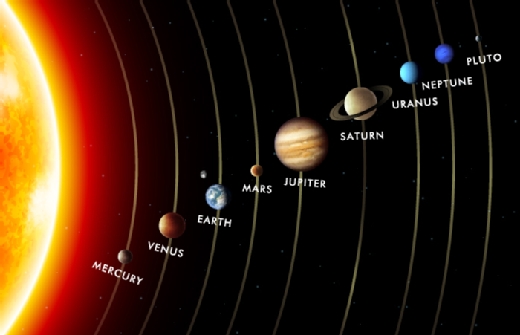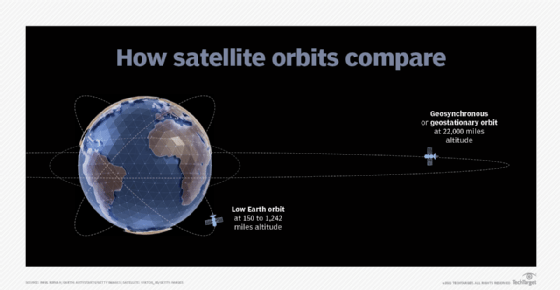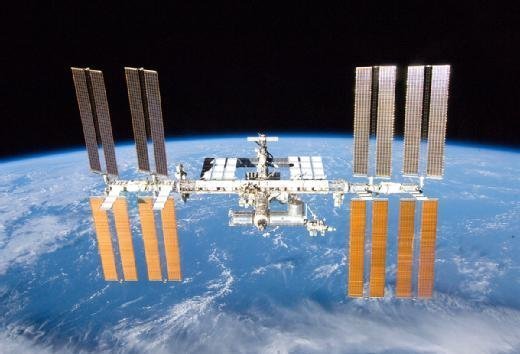space
What is space?
Space is a term that can refer to various phenomena in science, mathematics and computing and generally encompasses the concept of an area or region. It is often used as a shorthand for outer space.
What is outer space?
Outer space is the region beyond a planet's atmosphere. For Earth, it begins about 100 kilometers (62 miles) above sea level. The line separating the atmosphere and outer space is called the Kármán line. The term outer space and the universe are roughly equivalent, except that outer space refers only to the area between planets, while the universe encompasses planets as well.
The universe is about 13.8 billion years old. It came into existence during the big bang. Due to the speed of light, telescopes can only see up to 13.8 billion light-years away. The universe is still expanding. There is debate among scientists whether the universe is infinite or is finite in size. It is unknown what is beyond the edge of the visible universe.

There is little matter in outer space. It is a hard vacuum, without any air. This also makes it extremely cold. There are some stray particles and radiation, though. Ironically, even though space itself is cold, due to the lack of particles to interact with, it is difficult to get rid of waste heat from spaceships, requiring specialized infrared radiators.
The universe is organized into larger and larger structures. Planets orbit stars in solar systems. Stars are organized in galaxies. Galaxies form clusters. Galaxy clusters make up superclusters.
Satellites and space exploration
Human-made satellites orbit Earth at various orbit heights. Low Earth orbit is the closest to Earth. This is where many Earth observation satellites, some communication satellites and the International Space Station orbit.
In geosynchronous orbit, the satellite stays above the same region of the Earth's surface. It is more expensive to get a satellite to geosynchronous orbit, so it is mainly used for satellites that are dedicated to certain regions of Earth.

Space exploration is an important area of research by many governments. In the United States, this is headed by the National Aeronautics and Space Administration. Space Force is the military arm of the U.S. space program. The Space Launch System is the main rocket for the U.S. government. Commercial companies, such as SpaceX, Blue Origin and Virgin Atlantic, are beginning to commoditize space travel and exploitation of the low-gravity environment.

Space in computing
The term space is often used in a computing or technology context. It is frequently used for memory storage space, the character space and white-space radio frequency (RF) spectrum. There is also the expression cyberspace to refer to digital communications, although it has fallen out of vogue in recent years.
Storage space is frequently used as a shorthand for computer storage. For example, you may hear it used in "I ran out of space on my hard drive." In this context, it is referring to fixed or non-volatile data storage room. It is used in this way for Windows Storage Spaces. It may also be used to refer to volatile memory address space. Address space layout randomization uses it in this context.
Every computer user is familiar with the spacebar on the keyboard. The space, tab and return keys are known as white-space characters. The correct use of white space is important for typography. In some programming languages, white space is not important, whereas, in others, the white space is important. Having an extra space can cause a compile error.
In radio communications, white-space spectrum is unused and unlicensed areas of the RF spectrum set aside by the government. These areas can be used by consumer electronics, such as white-space Wi-Fi.
Space in mathematics and logic
In mathematics, space is defined as a boundless, three-dimensional continuum where objects can have relative positions, directions and size. The dimensions are generals associated with the X, Y and Z axes. In some cases, the three dimensions of space are combined with the dimension of time, creating what is known as space-time.
When attempting to solve a problem, it is good to define the problem space. A problem space is a logical collection of the problem and everything associated with the problem. The problem space includes the current issue, any previous work and everyone associated with the problem.
See also: mathematical symbols, direct broadcast satellite, Starlink, satellite constellation, slack space, storage capacity planning, storage utilization, free-space optics and personal operating space.
